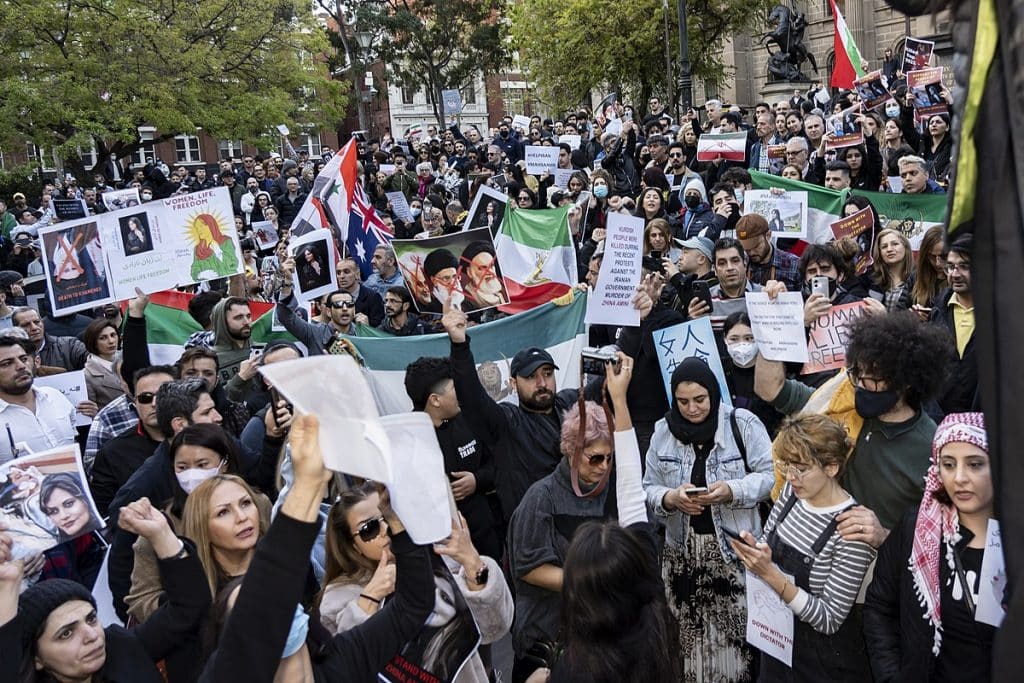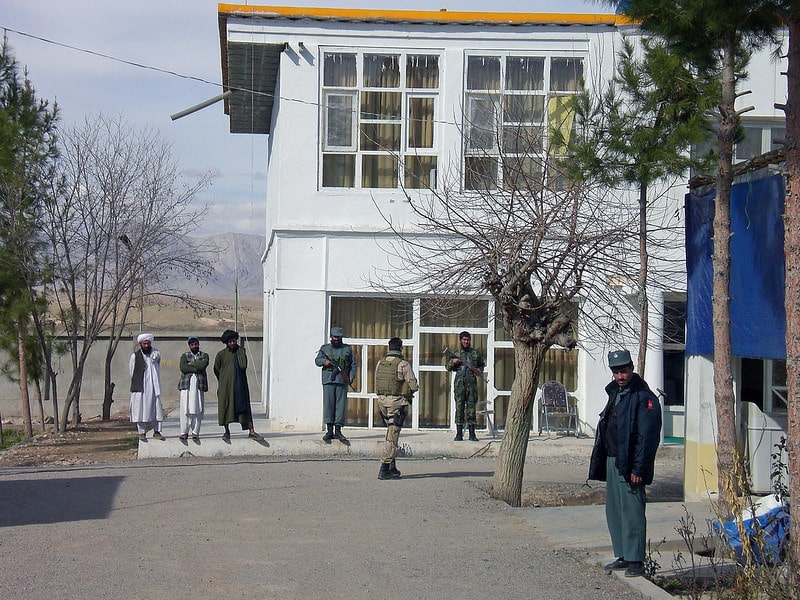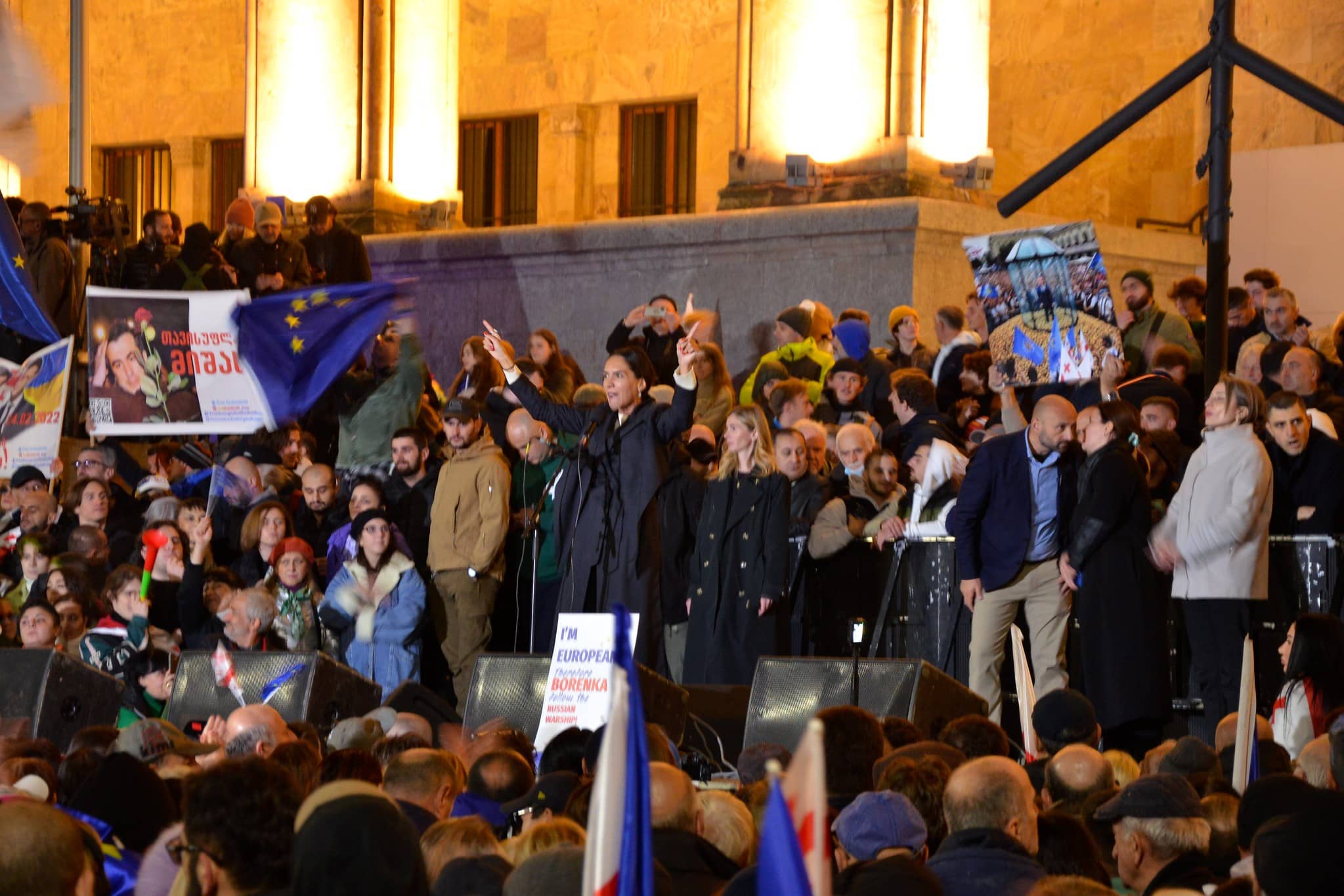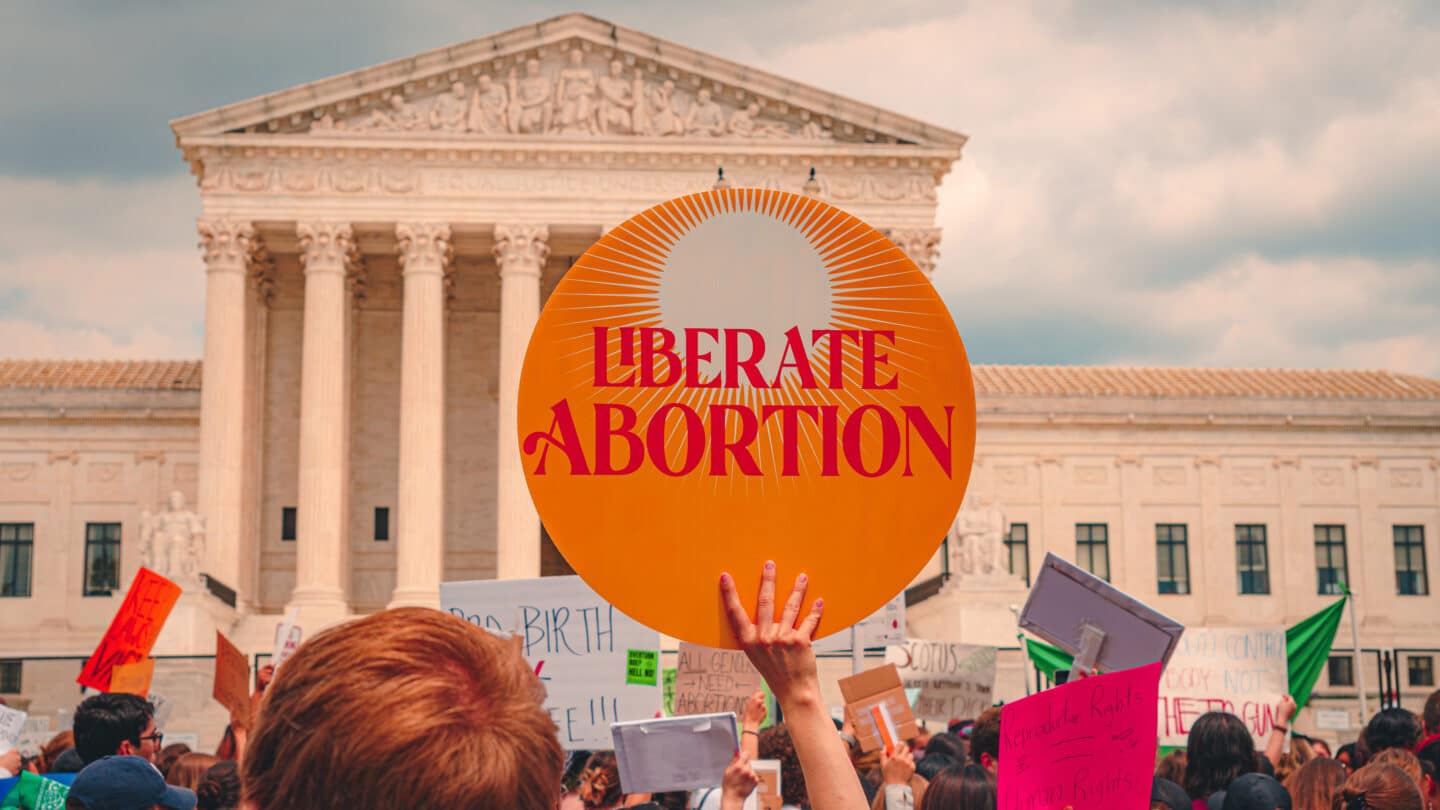Protest in Melbourne in September 2022 in solidarity with protests in Iran
Over the past 12 weeks, Iranians took to the streets en masse to demonstrate. The immediate cause was the death of 22-year-old Masha Amini, who was arrested by the so-called vice police for not wearing "modest clothing" prior to her death. The protests continue, despite the authorities' hardening crackdown and half-hearted promises by the regime.
"Women, life, freedom"
The current protests are the largest since those in 2019-2020, when Iranians took to the streets en masse, initially in protest against rising oil prices. Eventually, these protests grew into a movement calling for democratisation and the overthrow of Ayatollah Ali Khamenei. In contrast, the current demonstrations seem to be at their core about women's rights, although the economic malaise, exacerbated by US sanctions, is certainly contributing to the discontent. One of the central slogans chanted by protesters is "women, life, freedom".
Relaxations announced
Last week, Iranian prosecutor Mohammad Jafar Montazeri announced that the vice police had been disbanded. The vice police enforce dress codes. When women violate the regulations, they are spoken to, or taken to "re-education centres". The vans used by the vice police have not been seen in public for some time.
In addition to the announced abolition of the vice police, work is said to be underway to relax the head curfew. The question is whether the regime's announcements make any difference. Iranians doubt whether the authorities will actually keep their promises. Critics argued that the promises were mainly a diversion to undermine last week's widespread strikes and protests.
"Rioters and lawbreakers"
Moreover, the Iranian regime's repression actually seems to be intensifying. In the past 12 weeks, the regime has killed at least 448 people, including 60 children and 29 women. Some 17,000 people have also been arrested. In the past week, there were two public executions of men who took part in the protests. Last week, five men were sentenced to death for allegedly killing a member of a paramilitary unit affiliated with the Revolutionary Guards. A famous Iranian footballer, Nasr Azadani, was also reportedly sentenced to death for taking part in the protests. The men sentenced to death are accused by Iranian authorities of "terrorism" and "warfare against God". After the second execution, authorities thanked the police for "responding to the general demand for restoring order and security and punishing rioters and lawbreakers."
Youth, Kurds and women
Despite heavy-handed repression and announced relaxations, protests continue. The genie seems to be out of the bottle. Participants in the protests come from all walks of life and ethnic groups in Iranian society. Three groups of protesters stand out in particular.
First, the courage of the younger generation stands out. In a way, it forms the backbone of the demonstrations. Universities and schools are the focal points of the protests. Millennials, Gen-Z, as well as the generation below Gen-Z, are actively involved in the protests. Videos showing schoolchildren raising their middle finger to an image of Ayatollah Ali Khamenei went around the world.
In addition, it is exceptional for different population groups to demonstrate together. Where previously population groups mainly campaigned for separately, they now set common goals. Protests are especially large in Kurdish cities. The protests started in Kurdish regions following the death of Kurdish Masha Amini. The Revolutionary Guards' crackdown also seems to be loudest in Kurdish provinces.
Finally, the crucial role played by women in these protests cannot be ignored. Women are represented both in the objectives of the protests and in the demonstrating crowds. Women take to the streets en masse to advocate for their rights and freedoms.
Broad-based movement
The participation of specifically young people, Kurds and women in the protests is noteworthy, but the protest movement is supported more broadly than by just these groups. Last week's strikes show that many workers are also behind the demands of the protests. Shopkeepers and workers in major industries laid down their work. This is unusual as many Iranians are struggling to make ends meet - partly because of economic sanctions imposed by the United States and Europe. Strikes pose a risk to many Iranians' livelihoods, especially as the authorities threatened the strikers with dismissal. If the strikes spread to other crucial sectors, such as transport and the metal and oil industries, they could potentially force the Iranian regime to reform. Mass strikes also preceded the 1979 Revolution.
The genie is out of the bottle. Funerals of dead protesters often lead to new protests again. The protesters do not seem to be silenced by heavy-handed repression and half-hearted promises.
Sources: The Guardian, Al Jazeera 1, Al Jazeera 2, Al Jazeera 3, Al Jazeera 4, Al Jazeera 5, De Volkskrant 1, De Volkskrant 2, De Volkskrant 3, De Volkskrant 4, The Washington Post
Image: Wikimedia Commons





